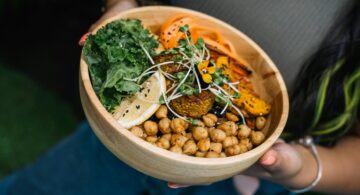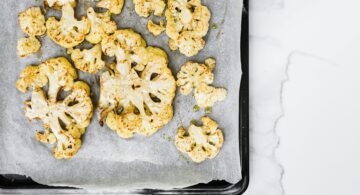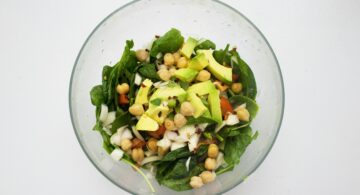Top 6 Testosterone Friendly Foods
Naturally increasing testosterone can be done in 3 primary ways.
- Increase muscle and reduce fat mass with the right combination of diet and exercise.
- Take natural testosterone-boosting supplements (like Renew Male).
- Enjoy the benefits of consuming testosterone-boosting foods. Add the following foods to your diet to support your testosterone production and rocket your masculinity!
Testosterone Friendly Food #1: Quinoa
Quinoa is known as “The Grain of the Gods.” However, it is not scientifically a grain, but similar enough to be grown for its edible seeds. This food has many properties that will likely help increase your muscle mass, hormones and bedroom prowess. Quinoa:
- Is an excellent source of complex carbohydrates (100 g has 64 g carbs and 7 g fiber).
- Has significant amounts of both lysine and isoleucine to serve as a complete protein source (14 g) readily available for use.
- Contains ecdysteroids, including 20-hydroxyecdysterone, which some studies have shown to possess anabolic (aka muscle building) properties.
Fun fact: the United Nations has declared 2013 International Year of Quinoa.
Testosterone Friendly Food #2: Cruciferous vegetables
Get rid of excess estrogen by eating RAW cruciferous vegetables:
- Broccoli
- Cauliflower
- Cabbage
- Other members of Brassica genus
The testosterone benefits of these vegetables are the anti-estrogen chemicals 3,3′-diindolylmethane (DIM) and indole-3-carbinol (I3C), as well as the anti-cancer compounds sulforaphane and selenium. Mom was right: eat your veggies!
Testosterone Friendly Food #3: Berries
Forget Viagra. Mother Nature’s original blue potency capsules may do even more for you. Blueberries, and other berries such as blackberries and raspberries, are not only delicious, but loaded with free radical scavenging antioxidants. For many older men, an accumulation of free radical damage to mitochondria and endothelial tissues may be a contributing factor to low testosterone and sexual dysfunction. The antioxidants in berries contribute to the fight against oxidative damage from free radicals which helps keep testosterone levels up (amongst other things). Basically, they help relax blood vessels and improve blood flow. For maximum potency and performance, eat a serving of blueberries at least three or four times a week.
Testosterone Friendly Food #4: Avocados, olives, and olive oil
These three testosterone-boosting foods (avocados, olives and olive oil) contain the highest percentage of monounsaturated fatty acids (MUFAs). In research I helped conduct at Penn State University (see Testosterone Tip #2), we showed that men who ate the highest levels of MUFAs also had the highest testosterone levels. Other foods naturally high in monounsaturated fats are pecans, almonds, cashews and high oleic versions of sunflower and safflower oil.
.
Garlic’s active ingredient enhances testosterone levels and inhibits cortisol, a hormone that competes with testosterone, limiting its actions and breaking down muscle tissue. Season other foods with garlic when you can, but eating whole cloves provides the most direct benefit.
Testosterone Friendly Food #5: Garlic
Another underestimated food is garlic. Garlic contains large amounts of sulfur-containing compounds, which mark garlic with its unmistakable smell and taste. This may repel vampires, but garlic’s pungent punch also helps keep away cancer, diabetes, benign prostatic hypertrophy (BPH), and pathogenic microorganisms. Scientific studies have proven garlic’s sulfur-containing compounds to simultaneously decrease cortisol while increasing testosterone.
Testosterone Friendly Food #6: Green tea
The antioxidant catechins in green tea – most notably EGCG – are decent aromatase inhibitors, meaning that they can prevent the conversion of testosterone to estrogen, therefore stabilizing our hormones. Green tea is also a natural source of caffeine and L-theanine, a mood enhancing amino acid.
Men have to understand that benefits of testosterone-boosting foods are not just limited to having a good sex drive, instead it positively affects the holistic health of which male sexual health, is a vital part. With balanced testosterone levels in body, one feels energized, has vitality and there is better blood circulation.
Sure, most men want increased testosterone and more muscle, and these foods will certainly help with that, but they will also significantly reduce your risk for chronic diseases like cancer, diabetes, and heart disease.
Thomas Incledon, PhD, RD, LD/N, NSCA-CPT, CSCS, RPT, Chief Scientific Officer, Human Performance Specialists, Inc.
Renew Male was formulated by Thomas Incledon (Tom), PhD, a world renowned scientist in the fields of anti-aging medicine and natural hormone therapy since 1989.
Tom is also the CEO of Human Performance Specialists, Inc. and Human Health Specialists where he helps individuals from all walks of life optimize their health, quality of life, and athletic performance.
References
1. Dinan L, Whiting P, Scott A. Taxonomic distribution of phytoecdysteroids in seeds of members of the chenopodiaceae. Biochemical Systematics and Ecology. 1998; 26(5):553-576.
2. Oi Y, Imafuku M, Shishido C, Kominato Y, Nishimura S, Iwai K. Garlic supplementation increases testicular testosterone and decreases plasma corticosterone in rats fed a high protein diet. J. Nutr. 2001; 131(8):2150-2156.
3. Satoh K, Sakamoto Y, Ogata A, Nagai F, Mikuriya H, Numazawa M, Yamada K, Aoki N. Inhibition of aromatase activity by green tea extract catechins and their endocrinological effects of oral administration in rats. Food and Chemical Toxicology. 2002; 40(7):925-933.
4. Todorov IN, Mitrokhin YI, Efremova OI, Sidorenko LI. The Effect of Ecdysterone on the Biosynthesis of Proteins and Nucleic Acids in Mice. Pharmaceutical Chemistry Journal. 2000; 34(9):455-458
5. Tóth N, Szabó A, Kacsala P, Héger J, Zádor E. 20-Hydroxyecdysone increases fiber size in a muscle-specific fashion in rat. Phytomedicine. 2008; 15(9):691-698.
6. Volek JS, Kraemer WJ, Bush JA, Incledon T, Boetes M. Testosterone and cortisol in relationship to dietary nutrients and resistance exercise. Journal of Applied Physiology. 1997; 82(1):49-54.


























